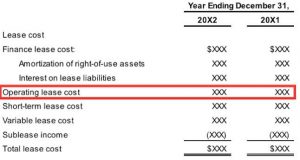What Is Account Reconciliation?

By performing reconciliations against the general ledger, the company can ensure that its the difference between margin and markup financial records are accurate and up-to-date. Some businesses create a bank reconciliation statement to document that they regularly reconcile accounts. This document summarizes banking and business activity, reconciling an entity’s bank account with its financial records. Bank reconciliation statements confirm that payments have been processed and cash collections have been deposited into a bank account.
- The Ascent is a Motley Fool service that rates and reviews essential products for your everyday money matters.
- If there are receipts recorded in the internal register and missing in the bank statement, add the transactions to the bank statement.
- If not, add the missing deposits to your records and your total account balance.
- Once the trial balance looks accurate, you can rest assured your accounts have been reconciled properly.
- This is important for ensuring the reliability of financial reporting in any organization and maintaining the integrity of the process and results.
The errors should be added, subtracted, or modified on the bank statement balance to reflect the right amount. Once the errors have been identified, the bank should be notified to correct the error on their end and generate an adjusted bank statement. A company may issue a check and record the transaction as a cash deduction in the cash register, but it may take some time before the check is presented to the bank. In such an instance, the transaction does not appear in the bank statement until the check has been presented and accepted by the bank.
Double-Entry Accounting Example
This type of reconciliation helps businesses maintain accurate financial records and identify any discrepancies, so they always know who owes them money and who they need to pay. But, if there are discrepancies due to pending charges or interest fees, reconciling accounts helps identify and correct the amounts owing, ensuring the company’s records match the external document. When it comes to cash accounts, a business’s internal records might show a specific balance at the end of the month. However, the company’s bank statement could display a slightly different amount.
The process of account reconciliation is all about creating a more robust and reliable financial foundation for your business. We hope you’ve gained a clear understanding of account reconciliation, the different types such as balance sheet and general ledger reconciliation, and their crucial role in business operations. Account reconciliation aids in financial reconciliation, ensuring that the numbers reported on the financial statements reflect the company’s true financial position.
During reconciliation, you should compare the transactions recorded in an internal record-keeping account against an external monthly statement from sources such as banks and credit card companies. The balances between the two records must agree with each other, and any discrepancies should be explained in the account reconciliation statement. Analytics review uses previous account activity levels or historical activity to estimate the amount that should be recorded in the account. It looks at the cash account or bank statement to identify any irregularity, balance sheet errors, or fraudulent activity.
Some people rely on accounting software or mobile apps to track financial transactions and reconcile banking activity. Others use a paper checkbook, and balance it each month, to keep a record of any written checks and other transactions. You can also opt to use a simple notebook or spreadsheet for recording your transactions. Bank reconciliations involve comparing the business’s financial statements with the statements it receives from the bank. This helps to ensure that the business’s records accurately reflect the transactions that have taken place in its bank account. Accounts payable reconciliation makes sure that general ledger balances match those in underlying subsidiary journals.
Income tax liabilities are reconciled through a schedule to compare balances with the general ledger. Adjustments are made as necessary to reflect any differences via journal entries. Tick all transactions recorded in the cash the cash dividend payout ratio book against similar transactions appearing in the bank statement. Make a list of all transactions in the bank statement that are not supported, i.e., are not supported by any evidence, such as a payment receipt. Account reconciliation should be prepared and carried out by qualified accounting personnel, typically within the finance department. Ideally, it should be someone who is not involved in the day-to-day transactions that performs it to maintain objectivity and ensure a thorough review.
Bank Statement Reconciliation FAQs

For example, a business might compare its cash account records (from its internal ledgers) with its monthly bank statement provided by its financial institution. Often, this process involves comparing internal financial records against monthly statements issued by external sources, like banks. The analytics review approach can also reveal fraudulent activity or balance sheet errors.
Complete journal entries
In the event that something doesn’t match, you should follow a couple of different steps. First, there are some obvious reasons why there might be discrepancies in your account. If you’ve written a check to a vendor and reduced your account balance in your internal systems accordingly, material variance your bank might show a higher balance until the check hits your account. Similarly, if you were expecting an electronic payment in one month, but it didn’t actually clear until a day before or after the end of the month, this could cause a discrepancy.
This one doesn’t have to be a comparative trial balance, because you’re only interested in checking the new balances after all your journal entries have been completed. The two outstanding checks will not have to be recorded as a journal entry, since the adjustment is on the bank’s side. If you’re not using accounting software, you’ll have to prepare a reconciliation form, which can be as simple or detailed as you like. The form needs to provide you with enough space to add any outstanding items that will resolve any discrepancies between the two balances.

